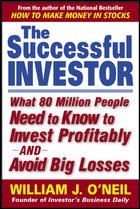Interesting Comparables; Finding Value In A Bull Market
As the market roars past the 2,400-resistance level, I have been receiving emails from my readers asking where to find value in a surging market. My advice is to keep the search simple and stick to comparative valuation in deciding where to find value.
Here are some interesting comparables worth pondering:
1.) Banco de Oro (BDO – P38.5) vs. Bank of P.I. (BPI – P58.0). BDO trades at 1.6x Price to Book (P/BV) whilst BPI trades at 2.7x PBV. I do think the valuation disparity between the 2 banks is unwarranted. The debt issues of both BDO and BPI are rated at parity by S&P Ratings, thus there should not be much valuation disparity in its equity stock. My view is that BDO should trade at P50.0, equivalent to 2.2x P/BV. At these levels, BDO will approximate the valuation of BPI. The 20% valuation premium of BPI – 2.7x P/BV over BDO – 2.2x P/BV; is more defensible.
2.) Manila Water (MWC – P9.2) vs. Meralco – (MERB – P29.50). I have been a believer in MWC since I recommended the stock last May. Please check - http://bigbigtrade.blogspot.com/2006/05/why-i-will-buy-manila-water-mwc-p650.html . MWC currently trades at 9.7x Price to Earnings (PER) ratio whilst MERALCO is valued at 18x PER. My view is that MWC should trade at a premium vis-à-vis MERALCO. MWC is in a unique position to grow its revenue by increasing its customer base and decreasing its non-revenue water (NRW). This means that MWC can grow organically without relying on rate increases. Other utility companies like MERALCO, need to petition for a rate hike to see an improvement in it bottom-line. The growth of MWC is predictable based on its track record, while a play on a possible rate hike for MERALCO is speculative.
Given these scenarios, I would be paying more for a predictable growth story. At the least, MWC should be trading at par with the market equivalent to 13x PER or P13.0 per share.
3.) Petron (PCOR – P3.95) vs. Philippine Market (PSEi – 2,512.0). Petron is one stock that has been battered by the negative press from the Guimaras oil spill. My view is that beyond the negative PR, the financial impact is minimal. Petron generates P200bn in revenues and roughly P12.0bn in pre-tax income. Thus, even a P1.0bn clean-up bill should not be an issue. Besides, this will take years to resolve.
Also, refiners and fuel distributors enjoy positive impact in margins against a backdrop of a declining oil price. Crude oil just broke down of the US$63.0/barrel level signifying further downside. This should bode well for the company moving forward. My view is that at 6.0x PER, Petron is way too cheap for an established blue-chip counter in the market. The PSEi currently trades at 13x PER
Here are some interesting comparables worth pondering:
1.) Banco de Oro (BDO – P38.5) vs. Bank of P.I. (BPI – P58.0). BDO trades at 1.6x Price to Book (P/BV) whilst BPI trades at 2.7x PBV. I do think the valuation disparity between the 2 banks is unwarranted. The debt issues of both BDO and BPI are rated at parity by S&P Ratings, thus there should not be much valuation disparity in its equity stock. My view is that BDO should trade at P50.0, equivalent to 2.2x P/BV. At these levels, BDO will approximate the valuation of BPI. The 20% valuation premium of BPI – 2.7x P/BV over BDO – 2.2x P/BV; is more defensible.
2.) Manila Water (MWC – P9.2) vs. Meralco – (MERB – P29.50). I have been a believer in MWC since I recommended the stock last May. Please check - http://bigbigtrade.blogspot.com/2006/05/why-i-will-buy-manila-water-mwc-p650.html . MWC currently trades at 9.7x Price to Earnings (PER) ratio whilst MERALCO is valued at 18x PER. My view is that MWC should trade at a premium vis-à-vis MERALCO. MWC is in a unique position to grow its revenue by increasing its customer base and decreasing its non-revenue water (NRW). This means that MWC can grow organically without relying on rate increases. Other utility companies like MERALCO, need to petition for a rate hike to see an improvement in it bottom-line. The growth of MWC is predictable based on its track record, while a play on a possible rate hike for MERALCO is speculative.
Given these scenarios, I would be paying more for a predictable growth story. At the least, MWC should be trading at par with the market equivalent to 13x PER or P13.0 per share.
3.) Petron (PCOR – P3.95) vs. Philippine Market (PSEi – 2,512.0). Petron is one stock that has been battered by the negative press from the Guimaras oil spill. My view is that beyond the negative PR, the financial impact is minimal. Petron generates P200bn in revenues and roughly P12.0bn in pre-tax income. Thus, even a P1.0bn clean-up bill should not be an issue. Besides, this will take years to resolve.
Also, refiners and fuel distributors enjoy positive impact in margins against a backdrop of a declining oil price. Crude oil just broke down of the US$63.0/barrel level signifying further downside. This should bode well for the company moving forward. My view is that at 6.0x PER, Petron is way too cheap for an established blue-chip counter in the market. The PSEi currently trades at 13x PER

